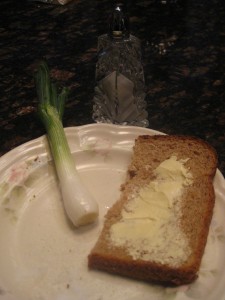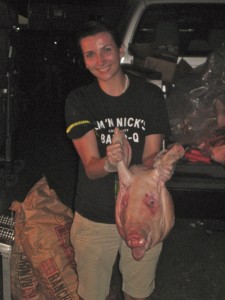Permaculture, the school of garden design that maximizes outputs while minimizing human and environmental inputs, turned me on a while ago to the idea of compost tea. This isn’t tea to drink, but rather to be drunk by your plants. They dig it. It’s  known as a foliant feeder, meaning it juices up your leaves. Since leaves are the main sites of food production for most plants, healthier leaves translates into heartier plants.
known as a foliant feeder, meaning it juices up your leaves. Since leaves are the main sites of food production for most plants, healthier leaves translates into heartier plants.
To make the tea, you simply tie up a wad of compost in an old rag or T-shirt (yes, that’s an old pair of boxer briefs), drop it in a watering can, and let it steep in the sun for two or three days like a tea bag. Shake things up occasionally, too.
(You can see that, having a watering can with a rather small fill hole at the top, I instead steeped the compost tea bag in a giant plastic bear. This bear once held animal crackers. Since then, it has been used to transport soil for various Concrete Jungle experiments. Basically, I dig Continue reading












